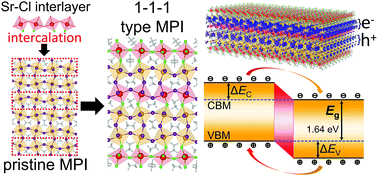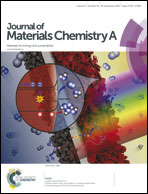Tuning spontaneous polarization and optical absorption by intercalating Sr–Cl-layers in organic–inorganic halide perovskite CH3NH3PbI3 thin films†
Abstract
Improvement of power conversion efficiency has always been a major issue in organic–inorganic halide perovskites. Highly efficient carrier separation and optical absorption are strongly required. In this work, we report on the significant improvement of electronic and optical absorption properties in a CH3NH3PbI3 thin-film by intercalating Sr–Cl-layers. Based on first-principles calculations, we demonstrate that intercalating Sr–Cl-layers into the film can give rise to complete elimination of surface states and a great enhancement of spontaneous polarization, while the band-gap is rather small. And both the number and insertion position of Sr–Cl-layers have significant influences on the electronic structure of the film; accordingly, we give a phase diagram for designing such a Sr–Cl-layer-inserted CH3NH3PbI3 thin film. Further investigations show that the Sr–Cl-layer can also greatly improve the optical absorption in the sunlight range. Calculations of the thermodynamic stability show the feasibility of synthesis in experiments. This work provides us with an effective strategy to improve the photovoltaic properties of organic–inorganic halide perovskites.



 Please wait while we load your content...
Please wait while we load your content...